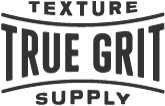Adam Nickel Interview
Motorcycle enthusiast and illustrator Adam Nickel, combines texture, craft and old fashioned perseverance to transport his work back to the 1950's
Interview by
Andrew Fairclough

First of all, can you give us a little background on you and your work?
Im 39 years old and live in Brisbane, Australia. My educational background is in graphic design, and I've been working as an illustrator for the last 14 years.
What drew you to start using texture in your work? Was it there from day one or has your use of texture evolved over time?
I started using more texture when I started to want to have a strong vintage feel to my work. Initially I wanted it so that when a person saw my work they couldn’t tell if it was from now or actually from the 40s and 50s.

How did you learn to use texture in your work? Was it through deliberate experimentation or happy accidents?
It was through deliberate experimentation, with a very specific look in mind. So I set about the tedious process of trying to get Photoshop to do what I wanted it to.
You do a lot of work with various custom motorcycle brands and publications. How important is it to seek out clients that align with your hobbies and interests outside of illustration?
Ultimately I’m enthusiastic to illustrate anything that I think will make for a good illustration in the end. But I do think that working on illustrations that are connected to your hobbies and interests, makes it easier to create accurate illustrations.
I know with motorcycles or even bicycles, if I see an illustration created by someone unfamiliar with the technical aspects, it shows. Such as a motorcycle motor that is just a weird mess of pipes and fins, to me it stands out like a sore thumb.


How important were personal projects and low budget yet interesting briefs to the development of your career?
When I first started putting a portfolio of work together, I tried to give the impression of having already got work. So I designed an illustration to go on a paper cup and then printed it off and wrapped it around a Slurpee cup and took a few photos of it. I think I did the same for a book cover and paper coaster as well from memory.
I guess I just figured it was best to try and make my “personal projects” look like actual projects so that I seemed as professional as possible. Then from that first day that an illustration job came in (a children's book for the educational market) I've made sure to almost never turn down any work. Which can make for some interesting plate spinning sometimes!

You’ve done a lot of great editorial work over the years. Do you have a strategy for producing high quality work on such notoriously short deadlines?
I think being a night owl helps, so I stay up as late as I need to till the roughs or final art look as best as possible. I think also making sure to have as much reference material as possible at your disposal helps. That way you’re much more likely to be getting started on the right foot.

"I’M CHASING THAT FEELING OF LOOKING AT SOMETHING AND FEELING LIKE ITS PERFECT AND YOU COULDN’T CHANGE A THING. THAT FEELING IS SO RARE FOR ME, BUT ITS WORTH CHASING."
Who’s work inspired you early on and who or what inspires you to keep going now?
In early high school I was obsessed with Japanese graphic novels—“Akira” especially—so I would say Katsuhiro Otomo has been a big influence on me for a long time. That may not necessarily show in my work now, but I think at an early age it showed me that through illustration you could create entire worlds and basically show people what you are picturing in your mind. That's special because not everybody has that ability. As far as what keeps me going now, I would say it’s being not completely happy with my work much of the time. Not to say I think it’s terrible, but I'm often feeling like it could be better. So I’m chasing that feeling of looking at something and feeling like its perfect and you couldn’t change a thing. That feeling is so rare for me, but its worth chasing.



Do you have any tips or lightbulb moments about working with texture that you’d like to share?
At some point I decided I wanted my illustration to look like it had actually been printed, rather than just being entirely digital. I think partially because I had come across the thinking that digital art was somehow less “special” or has less soul than traditionally created media. So I figured rather than working traditionally (because who wants to do that!) instead, through the use of textures, I would create the illusion.
Any advice for young designers and illustrators starting out?
I think as a way to not lose sight of the important things, the work itself should ultimately be the the reward. So career success or recognition from peers is just a bonus on top of that.
















